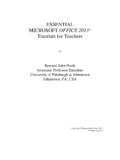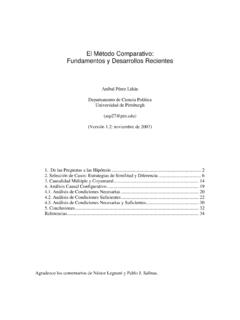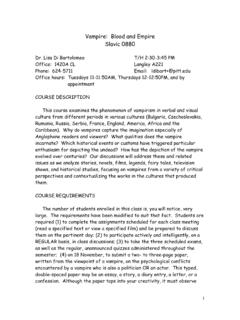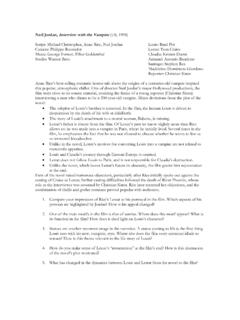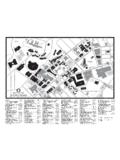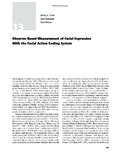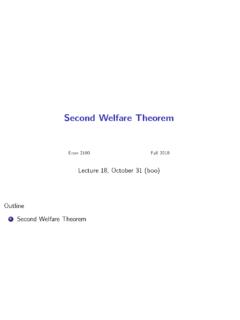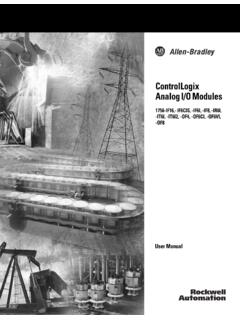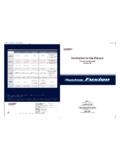Transcription of Digital Modulation
1 1 Digital Modulation Digital Modulation David TipperAssociate ProfessorAssociate ProfessorDepartment of Information Science and TelecommunicationsUniversity of Pittsburghhttp:// Communication SystemSourceSource EncoderChannelEncoderModulatorDestinatio nSource DecoderChannelDecoderDemod-ulatorChannel 2 About Channel Capacity Channel Capacity (C) the maximum rate at which data can be transmitted over a given communication path, or channel, under given conditions Data rate (bps) rate at which data can be communicated , impairments, such as noise, limit data rate that can be achieved Bandwidth (B) the bandwidth of the transmitted signal as constrained by the transmitter and the nature of the transmission medium (Hertz) Noise (N)
2 Impairments on the communications path Error rate -rate at which errors occur (BER) Error = transmit 1 and receive 0; transmit 0 and receive 1 Reasons for Choosing Encoding Techniques Digital data, Digital signal Equipment less complex and expensive than Digital -to- analog Modulation equipment analog data, Digital signal Permits use of modern Digital transmission and switching equipment Digital data, analog signal Some transmission media will only propagate analog signals , unguided media (air) analog data, analog signal analog data in electrical form can be transmitted easily and cheaply , AM Radio3 Signal Encoding Criteria What determines how successful a receiver will be in interpreting an incoming signal?
3 Signal-to-noise ratio (SNR) Data rate Bandwidth (B) Inter-related quantities Increase in SNR decreases bit error rate Increase in data rate increases bit error rate Increase in bandwidth allows an increase in data rate Shannon Bound for AWGN non fading channelConcepts Related to Channel Capacity Shannon Bound for AWGN non fading channel NyquistBandwidth For binary signals (two voltage levels) C = 2B With multilevel signaling (M-arysignalling) C= 2 Blog2M M= number of discrete signal or voltage levels N= number of bits M = 2N() /1log2 NSBC+=4 Example of Nyquistand Shannon Formulations Spectrum of a channel between 3 MHz and 4 MHz ; SNRdB= 24 dB Using Shannon s formula How many signaling levels are required?
4 ()251 SNRSNRlog10dB 24 SNRMHz 1 MHz 3 MHz 410dB==== =B()Mbps88102511log10626= + =C()16log4log102108log222662== = =MMMMBCD igital Transmission Why Digital ? Increase System Capacity Increase System Capacity compression, more efficient Modulation compression, more efficient Modulation Error control coding, Error control coding, equalizers,etcequalizers,etc. possible to combat . possible to combat noise and interference => lower power needednoise and interference => lower power needed Reduce cost and simplify designsReduce cost and simplify designs Improve Security (encryption possible)Improve Security (encryption possible)
5 Digital Modulation analog signal carrying Digital data5 Digital Modulation and demodulationsynchronizationdecisiondigit aldataanalogdemodulationradiocarrieranal ogbasebandsignal101101001radio receiverdigitalmodulationdigitaldataanal ogmodulationradiocarrieranalogbasebandsi gnal101101001radio transmitterModulation Review Modulation Converting Digital or analog information to a waveform suitable for transmission over a given medium Involves varying some parameter of a carrier wave (sinusoidal waveform) at a given frequency as a function of the message signal General sinusoid A cos(2 fCt + ) If the information is Digital changing parameters is called keying ( ASK, PSK, FSK)AmplitudeFrequencyPhase6 Modulation Motivation Smaller antennas ( , /4typical antenna size) = wavelength = c/f , where c = speed of light, f= frequency.
6 3000Hz basebandsignal => 15 mile antenna, 900 MHz => 8 cm Frequency Division Multiplexing provides separation of signals medium characteristics Interference rejection Simplifying circuitry Modulation shifts center frequency of basebandsignal up to the radio carrier Basic schemes Amplitude Modulation (AM) Amplitude Shift Keying(ASK) Frequency Modulation (FM) Frequency Shift Keying (FSK) Phase Modulation (PM) Phase Shift Keying (PSK) Digital Modulation Amplitude Shift Keying (ASK): change amplitude with each symbol frequency constant low bandwidth requirements very susceptible to interference Frequency Shift Keying (FSK): change frequency with each symbol needs larger bandwidth Phase Shift Keying (PSK).
7 Change phase with each symbol More complex robust against interference101t101t101t7 Basic Encoding TechniquesAmplitude-Shift Keying One binary digit represented by presence of carrier, at constant amplitude Other binary digit represented by absence of carrier where the carrier signal is Acos(2pfct) Very Susceptible to noise Used to transmit Digital data over optical fiber() =ts()tfAc 2cos01binary 0binary 8 Binary Frequency-Shift Keying (BFSK) Two binary digits represented by two different frequencies near the carrier frequency where f1and f2are offset from carrier frequency fcby equal but opposite amounts B = 2([f2 f1]/2 + fb) Where fb= input bit rate() =ts()tfA12cos ()tfA22cos 1binary 0binary Phase-Shift Keying (PSK) Two-level PSK (BPSK) Uses two phases to represent binary digitsB = fb() =ts()tfAc 2cos() +tfAc2cos1binary 0binary =()tfAc 2cos()
8 TfAc 2cos 1binary 0binary 9 Selection of Encoding/ Modulation Schemes Performance in an AWGN channel How does the bit error rate vary with the energy per bit available in the system when white noise present Performance in fading multipath channels Same as above, but add multipath and fading Bandwidth requirement for a given data rate Also termed spectrum efficiency or bandwidth efficiency How many bits/sec can you squeeze in one Hz of bandwidth for a given error rate Cost The Modulation scheme needs to be cost efficient Circuitry should be simple to implement and inexpensive ( detection, amplifiers) Given any Modulation scheme, it is possible to obtain its signal constellation.
9 Represent each possible signal as a vector in a Euclidean space spanned by an orthonormalbasis. If we know the signal constellation, we can estimate the performance in terms of the probability of symbol error or probability of bit error given the noise parameters. Probability of error depends on the minimumdistance between the constellation Constellation10 TomasiElectronic Communications Systems, 5eBPSK Signal Costellation The receiver implementation can affect the performance. Coherent detection receiver will exploit the exact knowledge of the phase of the carrier to detect the signal better. Non-coherent detection involves making some approximations to the phase information that results in a loss in performance.
10 However, it simplifies the circuitry. In symbol detection decode incoming signal as closest symbol in the signal constellation spaceSymbol Detection11 Example of BPSKA binary 1 is represented by:A binary 0 is represented by:()TnccTEfTttftsb= = , 0 , 2cos)(21 ()TttftscTEb = 0 , 2cos)(22 We can write ()Tt0 ,2cos(t))()()()(T221 = = =tftEtstEtscbb whereWhat is the energy of (t)?()()()[]14cos12cos021202202=+== = dttfdttfdttEcTTcTTT Note that the energy in one bit of BPSK is constellation of BPSK isZ2Z1s2s1bE bE12 When do errors occur in BPSK? S1is transmitted and the received point falls in Z1region.
